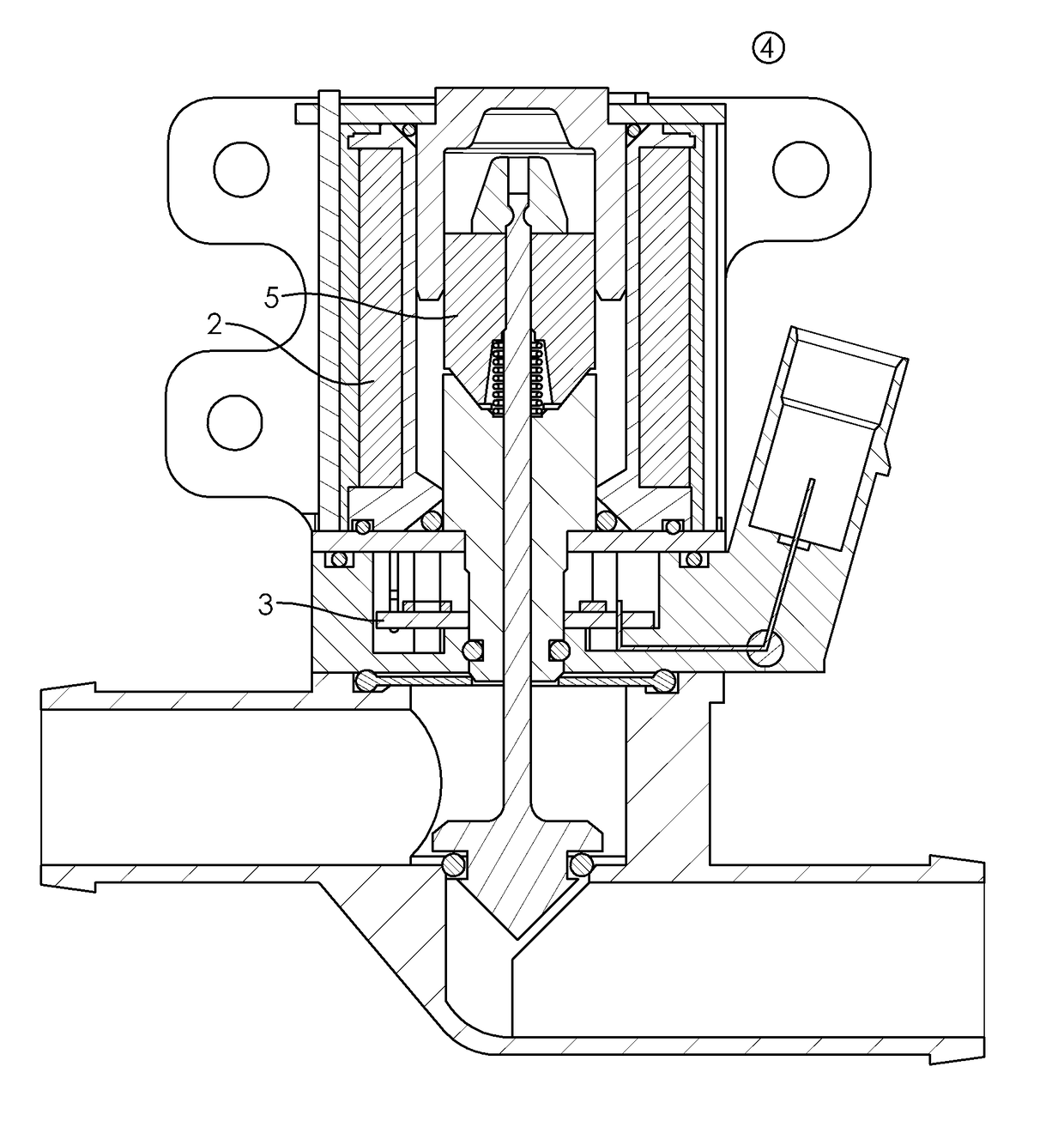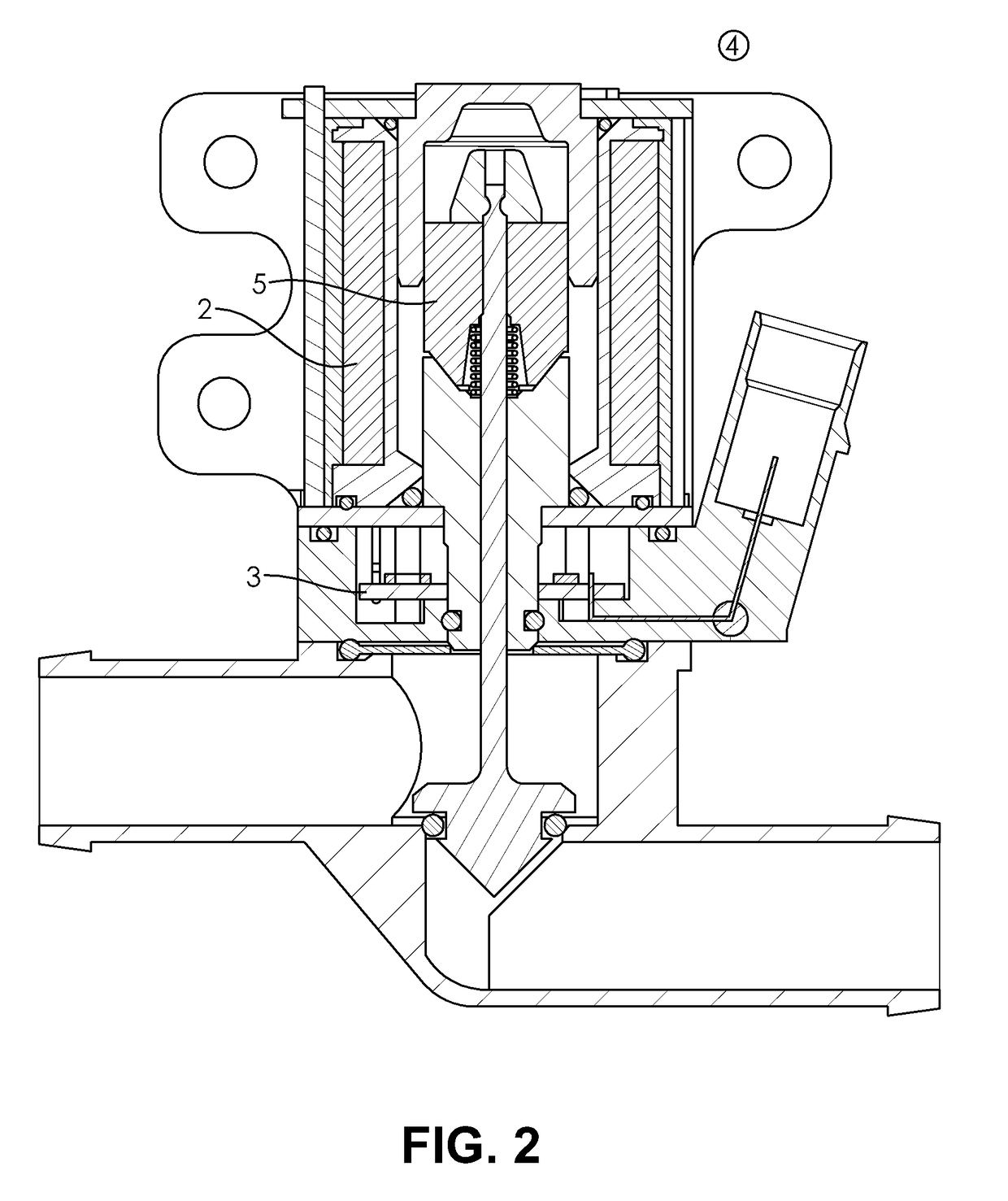Solenoid - actuator with passive temperature compensation
a solenoid actuator and passive technology, applied in the field of magnetic coils, can solve the problems of high current, high cost, excessive heating of the coil, etc., and achieve the effects of reducing the number of coils, facilitating temperature compensation, and reducing the current flow
- Summary
- Abstract
- Description
- Claims
- Application Information
AI Technical Summary
Benefits of technology
Problems solved by technology
Method used
Image
Examples
Embodiment Construction
[0031]The magnetic coil 1 shown schematically in FIG. 1 has a coil 2 whose electrical resistance increases with increasing temperature. In order to compensate for this, a passive circuit 3 with NTC behavior is connected in series with the coil.
[0032]The actuator 4 shown in FIG. 2 has an anchor 5 actuated by the coil 2 and, on a circuit board, the temperature compensation circuit 3.
[0033]FIG. 2 denotes a coil, and a “bracket”, by means of which the actuator can be attached, for example. Only FIG. 2 denotes a cover, and the valve body, which is substantially Z-shaped in the case shown, wherein in the case shown the central, a short leg is substantially perpendicular to two other legs, which correspond to an inlet and an outlet. Furthermore, in the example shown, a valve tappet 5 is provided in the central leg of the “Z” in order to open or close the fluid passage. In the example shown, the valve tappet also moves substantially perpendicularly to the inlet and the outlet, and a plane o...
PUM
| Property | Measurement | Unit |
|---|---|---|
| angle | aaaaa | aaaaa |
| angle | aaaaa | aaaaa |
| electrical coil resistance | aaaaa | aaaaa |
Abstract
Description
Claims
Application Information
 Login to View More
Login to View More - R&D
- Intellectual Property
- Life Sciences
- Materials
- Tech Scout
- Unparalleled Data Quality
- Higher Quality Content
- 60% Fewer Hallucinations
Browse by: Latest US Patents, China's latest patents, Technical Efficacy Thesaurus, Application Domain, Technology Topic, Popular Technical Reports.
© 2025 PatSnap. All rights reserved.Legal|Privacy policy|Modern Slavery Act Transparency Statement|Sitemap|About US| Contact US: help@patsnap.com



